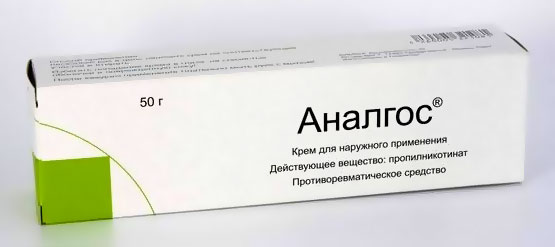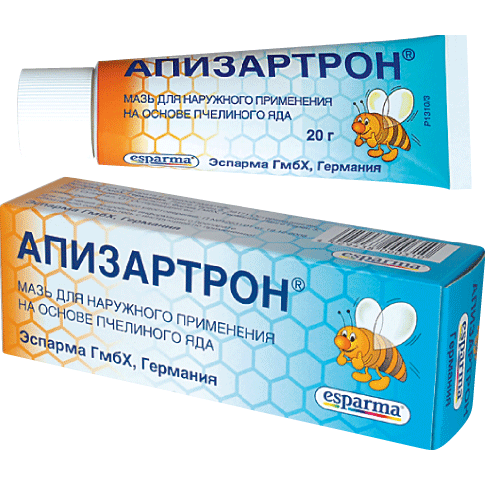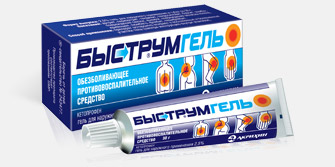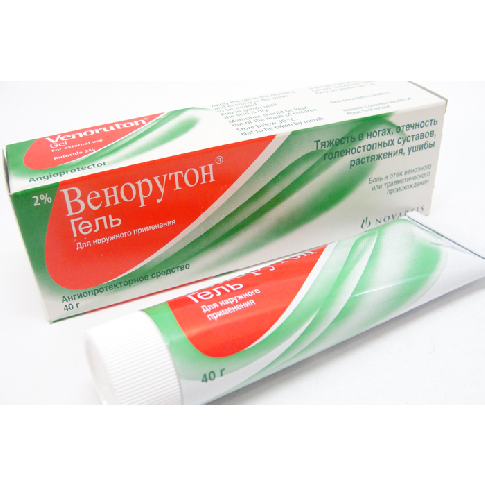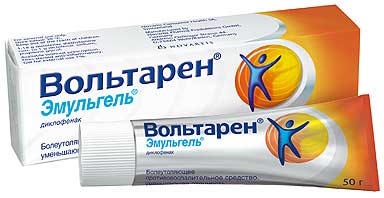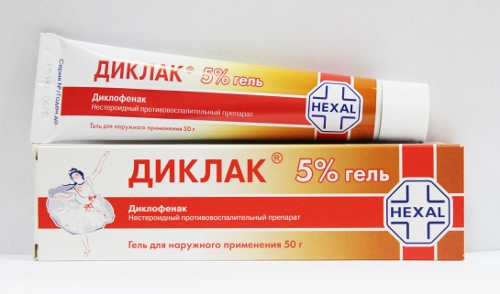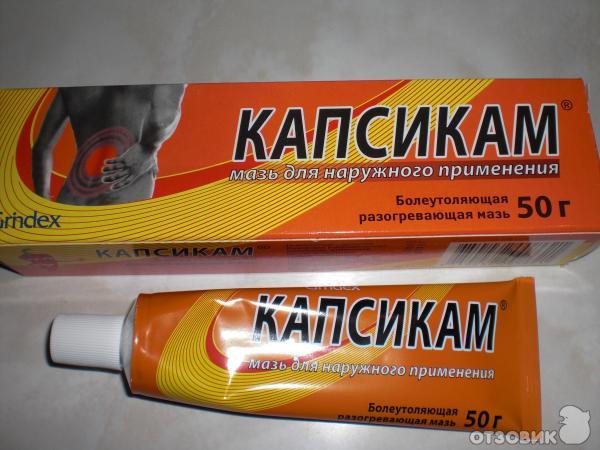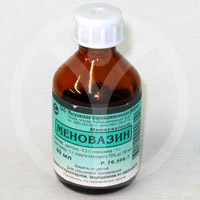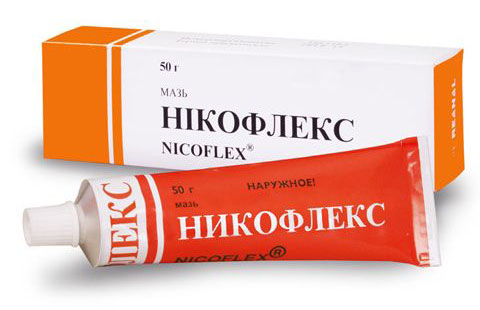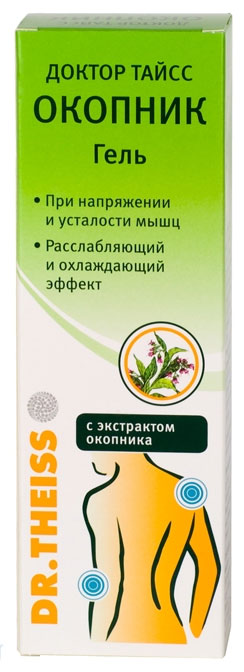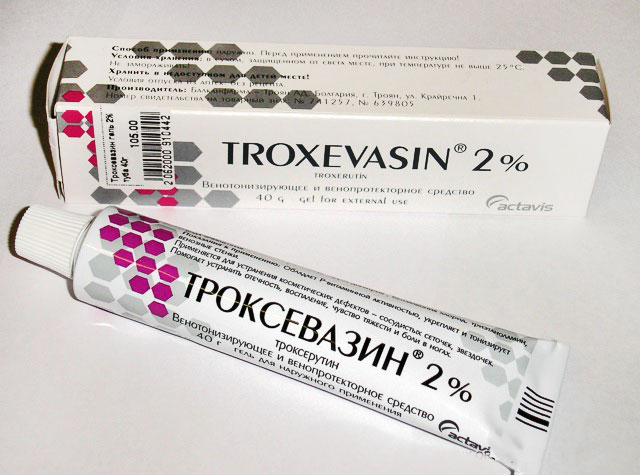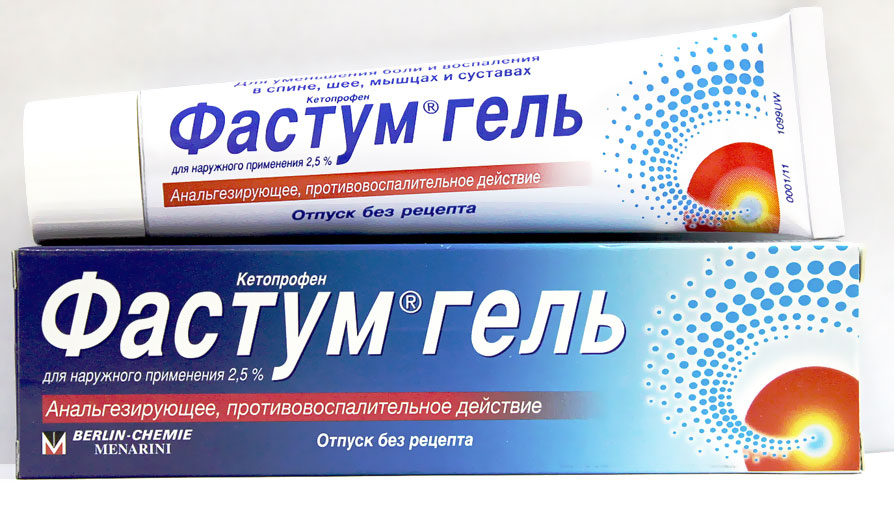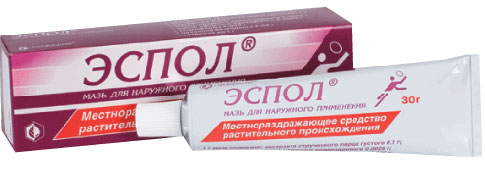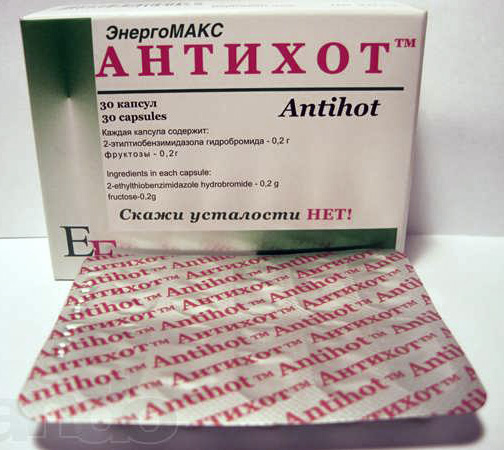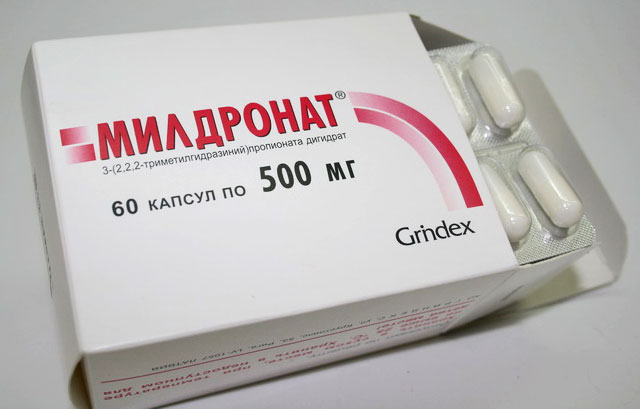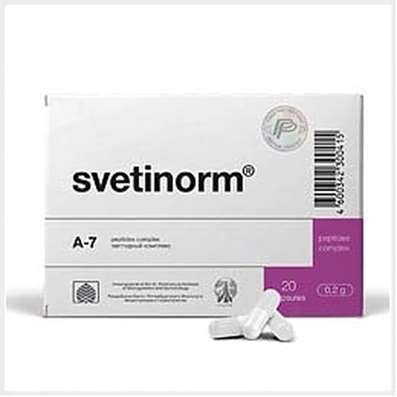25 Oct 2016
Phenibut is a fenilny derivative GAMK, and also derivative a feniletilamina. Phenibut possesses elements of nootropic activity, has tranquilizing effect, reduces tension, alarm, improves a dream; extends and strengthens action of hypnagogues. Apply Phenibutum to correction asthenic and alarming and neurotic states, alarm, pavor, sleeplessness and to motion desease prophylaxis. Also phenibut found the application in sport.
Drug was developed in the USSR in the 60th years what hundreds of researches were devoted to. Phenibut entered the standard first-aid kit of astronauts. Has characteristic acidic and salty taste.
Dosage. The recommended daily dose makes 250-1500 mg a day, in 2-3 receptions. Detailed indicatings on use are described in the instruction.
Side effects
According to responses of the people having experience of reception most often in practice such side effects as nervousness, a shiver, nervousness, an internal strain, irritability, fatigue, a loss of appetite, a heartbeat acceleration, nausea, sleeplessness develop. At an overdosage a sleepiness and oppression of consciousness develops.
Collateral reactions to phenibut have reversible character and are shown less often than in 10% of cases. Reception is allowed even to children 8 years are more senior. Thus, in general this agent can be classified as safe.
Use of phenibut in sport
- Phenibut is used already many years by athletes for achievement of the following purposes:
- Improvement of neuromuscular interface
- Activation of psychoaction (though in certain cases uses the sedation develops) and improvement of ideational function
- Rising of physical endurance
- Improvement of a blood flow in a brain and muscles, including due to depression of viscosity of a blood
- Adaptogenny and anti-asthenic action
- Restoration of a sleep pattern
Phenibut's application for improvement intellectual functions
Phenibut (Phenibutum)
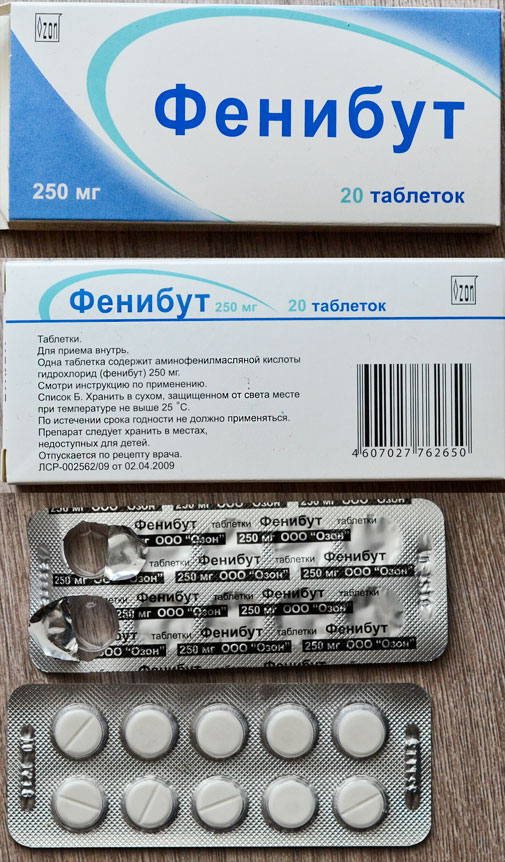
Chemical name: gamma amino - beta phenyl-oleic acid a hydrochloride.
Structural formula: White crystal powder. It is very easily soluble in water, we will dissolve in alcohol, pH of water solution (2,5%) 2,3 2,7.
On chemical structure phenibut it is possible to consider as fenilny derivative GAMK and also as derivative a feniletilamina.
Phenibut it is synthesized in 1963 in laboratory of professor V. V. Perekalin at department of organic chemistry of the Leningrad teacher training college of A. I. Herzen.
Phenibut is the first domestic tranquilizer with an original range of psychotropic action. However more than twenty years' studying of pharmacology of a phenibut doesn't allow to carry it with complete confidence now to a class of tranquilizers as its properties considerably differ from properties the benzodiazepe and other tranquilizers.
Pilot studies showed that tranquilizing activity of a phenibut is absent or is poorly expressed in the test of a conflict situation (R. A. Haunina, I. P. Lapin, 1976; I. S. Morozov and ρξΰβς., 1979; R. A. Haunina, M. M. Zobachev, 1981; L. X. It is scarlet also to Meta and coauthors, 1981). It is assumed that the tranquilizing effect in these experiences can be weakened by some miorelaksant-sedative effect inherent in a phenibut (A. M. Zhar-kovsky, 1981). However also other, mutually exclusive assumption of an origin of weak tranquilizing action of a phenibut in a conflict situation availability of analgetic effect which is capable to simulate efficiency of a fenibut in these experiences (A. M. Zharkovsky and coauthors expresses., 1984).
In the psychotropic characteristic of a phenibut a number of the effects causing its sedative action is revealed: oppression of approximate and physical activity, coordination of movements, decrease in a muscular tone, hypothermal effect, potentiation of narcotic action of a geksenal, hloralgidrat, air, oppression of the emotional reactions caused by electropainful irritation (I. P. Lapin, R. A. Haunina, 1964; R. A. Haunina, 1968, 1971, 1978; L. B. Nurmand and coauthors, 1980). Unlike tranquilizers of a benzodiazepe row phenibut has no anticonvulsive effect in experiences with use of models of the spasms caused korazol, strychnine and electric current (R. A. Haunina, 1968, 1976). Phenibut weakens audiogene spasms and convulsive effect of thioseven-carboazid some, and also slightly strengthens action of anticonvulsive means (phenobarbital, a difenin, a trimetin). It is supposed; that anticonvulsive action of a phenibut is mediated by its expressed anti-hypoxemic influence (R. A. Haunina and coauthors, 1968). At the same time, as it was established recently, phenibut the kinureninovykh of the spasms corresponding to "grand mal" an epilepsy form has the anticonvulsive effect which was more expressed than diazepam on models (I. P. Lapin and coauthors., 1983).
Neurochemical basis of tranquilizing action of a phenibut as believe, his influence on GAMK-ergichesky system is, apparently: binding of a phenibut with GAMK (kal-tsiyzavisimy and bikukullinnechuvstvitelny) receptors, strengthening of release of GAMK, suppression of activity of GAMK-transaminaza who is carrying out metabolic degradation of GAMK (K. S. Rayevsky, 1981; L. K. Ryago and coauthors, 1982; G. I. Kovalyov and coauthors, 1982). Confirm the GAMK-ergichesky component of the mechanism of action of a phenibut also this experiences with introduction of medicine to s. nigra and the counterlateral turns caused by him (L. X. Allikmets , 1981). Phenibut, besides, causes accumulation of dopamine and its metabolites in a brain of animals and activates serotoninergichesky system (R. A. Haunina, 1970; L. X. Allikmets and coauthors, 1979; L. B. Nurmand and coauthors, 1980).
The depriving of bonuses effects of a phenibut in an experiment are shown in the range of doses over 30 mg/kg, in smaller doses the activating, behavior of animals influence of a phenibut is found (N. A. Patkina, E. E. Zvartau, 1979). Data on nootropic action of a phenibut in experiments on animals are contradictory. It is established that phenibut has the expressed anti-hypoxemic effect in the conditions of a giperkapnichesky hypoxia and prevents the amnesia caused by an electroshock (R. U. Ostrovskaya and coauthors, 1984). In experiences with use of elaboration of conditional reactions of passive and active avoiding, and also training models in a difficult labyrinth with a food reinforcement and a water labyrinth (Yu. G. Kovalyov, 1979; E. L. Kovalyov, 1984) isn't received the results demonstrating improvement of processes of memory and training at experimental animals. Nevertheless there is a number of features of action of a phenibut which pull together him with neurometabolic stimulators like piracetam. Phenibut normalizes metabolism of a brain, restoring processes of oxidizing phosphorylation and tissue respiration (V. I. Kresyun, 1983); reduces a ratio "a lactate / piruvat", prevents development of experimental hypostasis of a brain (V. E. Novikov and coauthors, 1984).
Studying of influence of a phenibut for memory of the healthy person showed that in a dose of 0,8 g medicine has the easy stimulating effect, improving random access memory (T. G. Agan, 1980; L. S. Mekhilane, 1981). At patients with chronic alcoholism phenibut had various effect on function of memory depending on its initial condition: at patients with undisturbed function of storing phenibut caused decrease in an index of memory, and patients with the lowered function have an increase in an index of memory (X. L. Vyare and coauthors, 1983). At the same time it is noted that under the influence of a course of treatment phenibut within 10 days on 0,75 g a day irritability reduction, weakening of symptoms of an abstinence syndrome and improvement of a dream at patients with alcoholism developed.
The clinical analysis of action of a phenibut showed that use of medicine as a tranquilizer is most effective in case of treatment of patients with an asthenic syndrome. Phenibut has advantages before benzodiazepinovy tranquilizers which consist that it doesn't cause violations of attention, coordination and accuracy of the movements and other violations accompanying treatment by tranquilizers (L. S. Mekhilane and coauthors, 1983).
Small toxicity, softness of action, lack of side effects prove use of a phenibut in children's and geriatric psychoneurology. Medicine is appointed for calm of excessively excitable children and children - neurotics, and also to elderly people in case of disturbing fussiness and night concern, frustration of a dream. Phenibut removes fear, alarm, tension, has the comforting effect. And though tranquilizing action of a fenibut is expressed poorly and, perhaps, isn't its main action (JI. S. Mekhilane and coauthors, 1983), availability of the activating component in a range of its psychotropic action allowed to recommend it as a "day" tranquilizer for optimization of operator activities and increase in efficiency of pilots and astronauts (I. P. Neumyvakin, 1978; N. E. Panferova, 1981; Yu. G. Bobkov and coauthors, 1984; G. D. Glod, P. V. Vasilyev, 1986). Feninut has no specific effect on adreno-and holinergichesky systems (R. A. Haunina, 1964; R. A. Haunina, M. M. Zobachev, 1981). Phenibut exerts the normalizing impact on functions of cardiovascular system, without reducing at the same time intellectual and physical efficiency and orthostatic stability of operators (N. E. Panferova and coauthors, 1981; G. V. Kovalyov, I. N. Tyurenkov, 1981).
Indications to use of Phenibutum are neurosises and psychopathies. Phenibut is also prescribed as a calmative before surgical interventions or other difficult morbid diagnostic procedures. Studying of clinical effects of Phenibut on the basis of a series of the leading clinics of the USSR (Psychoneurological institute of V. M. Bekhterev, Psychiatric clinic of S. S. Korsakov, the Moscow institute of psychiatry and some other) allowed to recommend Phenibut at logoneuroses; habit spasms of a functional and organic parentage at children; spastichnost of muscles after cerebral strokes and injuries; sleep disorders (at neurosises, vascular and senile psychoses, and also at almost healthy people); hypomaniacal states at a cyclotomy; for a softening of electroconvulsive attacks and reduction of their duration; at emotional pressure at the operators working in difficult conditions (T. Ya. Hvilivitsky, 1981). As an antihypertensive Phenibutum is recommended for therapy of hypertensias at vegeto-vascular dystonia at children and teenagers (E. I. Volchansky, 1981).
Phenibut is released in powders and tablets on 0,1 and 0,25 g (packing on 50 tablets). Prescribe drug inside (to food) 3 times a day on 0,25 g, a course of treatment 4 6 weeks; intramusculary on 3 10 ml of 2,5% solution in 3 5 ml of 0,25% solution of Novocainum 2 3 times a day; intravenously on 3 10 ml of 2,5% of solution from 3 5 ml of isotonic solution of sodium of Sodium chloridum 2 3 times a day; a course of treatment 8 12 days.
The maximum single dose inside adult 0,75 g; to persons 60 years 0,3 g are more senior; to children up to 8 years 0,15 g; from 8 to 14 years 0,4 g.
It is established that Phenibut is found practically in all organs and tissues in 15 min. after introduction, it is removed completely in a day with urine (M. N. Maslova, R. A. Haunin, 1981). Phenibutum gets into a brain in insignificant, however quantities, sufficient for change of functioning of the central nervous system.
Treatment phenibut can be combined with purpose of other psychotropic drugs.
At the first receptions of phenibut or at overdose drowsiness can be observed.
Contraindications aren't established
Use of phenibut in psychiatry and narcology
From the moment of emergence of the first publications about use of Phenibut passed nearly a quarter of the century in psychiatric practice. However so far there is no consensus about Phenibut belonging to one of the famous groups of psychotropic medicines (A. M. Zharkovsky and coworkers., 1984), as well as the final, unambiguously understood idea of features of a range of its psychotropic action.
In the existing publications Phenibutum is carried either to tranquilizers, or to nootropic medicines. A series of clinicians and psychopharmacologists allocates Phenibut as a tranquilizer with a component unlike benzodiazepine and other tranquilizers with a sedative component. Besides, in a number of references there is an eclectic conclusion about existence in a range of psychotropic activity of Phenibut of tranquilizing and nootropic properties, and according to this point of view drug is considered as a tranquilizer with a peculiar nootropic action or as a nootropic agent with tranquilizing properties.
Majority of clinical data, and also results of experimental studying (L. K. Ryago, 1983; 3. S. Nikitina and coworkers., 1983; V. I. Kresyun, 1983; A. M. Zharkovsky and coworkers., 1984; R. U. Ostrovskaya and coworkers., 1984; etc.) allow to estimate Phenibut as drug with the expressed nootropic (neurometabolic) action.
Efficiency of phenibut in case of frustration of a neurotic circle is studied most in detail.
L. S. Mekhilane and coauthors. (1984) carried out studying of therapeutic activity of a phenibut in comparison with diazepam, piracetam and placebo at 125 patients with neurosises and 96 patients with somatogenic conditions. Studying of efficiency of phenibut was carried out at 100 patients in the conditions of double "blind" experience and at 121 patients in case of a "direct" research.
In case of overall assessment of effect of medicines at all contingent of the researched patients it was established that reliable improvement in their condition occurred for the 3rd day of treatment in case of application of phenibut and diazepam and only after 14 days in case of treatment by piracetam.
Data on influence of a phenibut on dynamics of separate psychopathological frustration in comparison with piracetam and diazepam are of special interest. The Estonian psychiatrists found out it with success.
Phenibut on action on symptomatology of a disturbing row considerably yielded to diazepam. The Trakviliziruyushchy effect of diazepam was shown practically in all cases of alarm and fear irrespective of their nosological accessory and was followed by a sedative component (emergence of sluggishness, fatigue, drowsiness etc.), especially at patients with somatic nervous like conditions.
At use of Phenibutum tranquilizing action became perceptible at patients with a neurosis-like state in whose clinical picture along with internal tension observed emotional lability, faintheartedness, tearfulness and other implications of a mental and physical asthenia. On the basis of these data authors come to conclusion that not the tranquilizing, but activating component is conducting in a range of action of Phenibutum. Considering improvement of concentration of attention, intellectual mnestetic abilities, disappearance of a flaccidity and fatigue, normalization of a dream at the patients receiving Phenibutum, L. S. Mekhilane et al. draw a valid conclusion that in psychotropic effect of this drug its nootropic effect is primary.
Authors explain with a similar combination of nootropic and tranquilizing action feature of the psychotropic activity of Phenibut other than Pyracetamum what bind a possibility of its use as choice agents in the conditions demanding optimum emotional and intellectual mnestetic a state and the high level of working capacity to.
V. E. Vasar (1987) studied a range of psychotropic activity and action on cortical functions of Phenibut in comparison with Aminalon, Pyracetam and Diazepam at patients with neurosises and somatogenic neurosis-like states.
In total drugs received 196 patients on an extent from 2 weeks to 2 months. The effect of drugs was estimated by means of the unified scales. For assessment of their action on cortical functions used a series of psychological tests.
According to the author, the most appreciable dynamics of the mental status of patients was noted in the first two weeks of therapy by the used drugs. Phenibut as V. E. Vasar considers, on a profile of clinical action has strong likeness with nootropic agents and combines moderately tranquilizing and expressed psychoenergizing properties in a range of psychotropic activity.
Analyzing own results and comparing them with literary data, V. E. Vasar does the conclusion about existence at Phenibut of also unstable sedative action which is shown in the doses exceeding by 10 20 times of a dose of Diazepam.
In daily doses of 1,0 1,5 g sedative effect of drug is a little expressed, is defined not at all patients and quickly disappears.
Hypnotic action of Phenibut in comparison with Diazepam is expressed slightly, unstably and depends on syndromal structure of a state. Noticeable improvement of a dream under the influence of Phenibut is noted at patients with an asthenic syndrome. At a hypochiondrial syndrome of a sleep disorder quite often amplify.
In the publication it is specified that the tranquilizing action of Phenibut estimated on a reduction of alarm, a pavor, the increased emotional excitability and phobic disturbances was observed only at patients with an asthenic syndrome. At patients with hypochiondrial and depressive syndromes tranquilizing action of Phenibut either is absent, or is poorly expressed and quickly disappears.
At Phenibut unlike Diazepam the expressed psychoenergizing properties which are shown in weakening of actually asthenic symptoms, rising of the general activity and initiative are taped.
Except clinical similarity of a phenibut to nootropic medicines it was established that this medicine as well as piracetam, influences kortikalny functions at patients with neurosises strengthens exciting process during treatment and improves its stability.
According to the author, on action on asthenic symptomatology, improvement of mood and easing persuasive (fobicheskikh) and the ipokhondricheskikh of frustration at patients with neurosis with fobicheski-asthenic, depressive and asthenic, ipokhondricheski-asthenic syndromes the nootropic medicines studied by it can arrange in process of decrease of their efficiency in the following order: phenibut, piracetam, aminalon.
It is necessary to emphasize that the brought V. E. Vasa rum (1987) the gradation of expressiveness of psychoenergizing properties of nootropic medicines correlates, judging by anti-hypoxemic effect, with their neurometabolic activity in an experiment (R. U. Ostrovskaya, 1983; JI. K. Ryago, 1983; R. U. Ostrovskaya and coauthors, 1984).
At patients with somatogenic conditions the researched medicines were located on expressiveness of therapeutic action as follows (in decreasing order): phenibut, diazepam, piracetam, aminalon, and on the speed of manifestation of therapeutic effect diazepam, phenibut, piracetam, aminalon.
As well as at patients with neurosises, phenibut, and also piracetam and aminalon were the most effective in the presence of asthenic symptomatology.
Based on the researches which specified a range of psychotropic activity and kortikalny effects of a fenibut, the author considers that this medicine belongs to nootropic means.
L. S. Mekhilane's assumption and (1984) about an opportunity to use phenibut in the conditions of the increased psychopharmacological tension it was completely confirmed to K. B. Magnitskaya (1985) when studying efficiency of a phenibut in the conditions of the autonomous swimming on yachts representing one of activities options in extreme conditions. The psycho-physiological condition of team when swimming in the high sea can have crucial importance for survival what the medicines raising psychophysical opportunities of the person can give essential help in.
The research of antistressorny action of a phenibut was conducted on 27 participants of a long sea campaign in whom tendency to seasickness was found earlier. The dose of a phenibut equaled 0,25 g. In the absence of effect repeated acceptance of medicine was permitted. Action of the studied means was estimated according to the subjective report and by means of a number of psychological tests (assessment of level of jet and personal uneasiness on Spilbergera, conflictness degrees by Rosenzweig's technique, the prozhektivny color test of Lyusher).
The antirocking to sleep action of a phenibut 21 persons (77,7% of cases) was estimated as considerable, 4 (14,8% of cases) as moderate and 2 (7,5% of cases) as insignificant.
In operation the phenibut of 25 people was noted by 2 periods: the first activating with the antirocking to sleep effect, the second tranquilizing.
The activating period began in 15 20 min. after acceptance of a phenibut and proceeded for 2 4 hours. At the same time physical activity improved, the work requiring physical mobilization and decision making process were facilitated, the vegetative symptomatology peculiar to seasickness disappeared. The most effective emotionally labile persons had use of a phenibut with satisfactory adaptive opportunities and at emotionally balanced persons. Less favorable results were received at persons emotionally labile with unsatisfactory adaptive opportunities. Irrespective of personal features of athletes they distinctly showed the tranquilizing period which is expressed in approach of feeling of calm and the subsequent deep sleep without dreams.
According to S. S. Losev and ρξΰβς. (1983), carrying-out double "blind" studying of a fenibut in comparison with piracetam, diazepam and placebo on model of an examination stress at 40 people, studied medicines on force a stress - protective action it is possible to arrange in the following order: piracetam, diazepam, phenibut, placebo.
The beneficial effect of a phenibut on structure of a night dream was revealed N. A. Vlasov (1979). Medicine in a dose of 10 mg before going to bed was applied at 8 healthy faces and 20 patients with a sleep disorder of neurotic genesis. Electroprinting researches performed against the background of adaptation night and after week acceptance of a phenibut.
By results of electroprinting researches it was established that under the influence of medicine the tendency to increase in general duration of a night dream at the expense of a surplus of a delta dream and a REM sleep in case of decrease in a superficial dream is observed. At the same time complications and by-effects, and also a negative impact of a phenibut on day working capacity weren't noted.
Under the influence of one-time acceptance of a phenibut duration of a night dream increased for 27,5 min., and after a week course of treatment for 39,8 min.
Comparative studying of influence on a dream of the person of a phenibut, oxibutirat of sodium and this cash and sodium with use of a multi-profile scale of poll and special questionnaires is carried out. The studied medicines applied in doses 1,0; 2,0 and 0,1 mg respectively.
As a result of a research it was established that by efficiency of action on dynamics of the indicators characterizing somnolent effect of medicines (the expressed desire to sleep after their acceptance, the necessary depth of a dream, sufficiency of a dream, bystry and habitual awakening, positive assessment of health after awakening), them it is possible to arrange in the following order (on efficiency decrease): phenibut, sodium, sodium cash.
The effect of a phenibut, according to researchers, is caused by its tranquilizing properties. The received results as researchers consider, allow recommend use of a phenibut for the purpose of correction of frustration of a dream at patients with neurosises, and also at healthy faces in especially extreme conditions.
Publications about influence of a phenibut on dynamics of mental disturbances in case of various nosological forms of vascular pathology of a brain are of special interest.
Apparently from table 33, the reduction of a psychopathologic symptomatology is steadier in group of the patients with emotional lability receiving Phenibutum and at the patients with mainly asthenic disorders accepting Pyracetam. Respectively successful use of these drugs at the vascular diseases of a brain which are exhausted the neurotic level of disorders has to be based on identification of a concrete psychopathologic syndrome.
Data about reliable (0,05) depression of systemic arterial pressure at all patients are provided in the publication. Fastness of a lowering of arterial pressure of a psychopathologic and psychoorganic symptomatology is most distinctly taped in 3 control months in group of the patients with emotional lability receiving Phenibut, and at the patient" with an asthenic symptomatology, accepting Pyracetam.
The received results have special value as well-timed diagnostics and treatment of initial implications of cerebral vascular pathology are extremely important for prophylaxis of further development of a disease.
In a difficult complex of recovery treatment of patients with a myocardial infarction the important place belongs to mental aftertreatment as the alienations arising in the course of a disease adversely influence clinical disease, have an adverse effect on results of aftertreatment in general (V.P. Zaytsev, 1976, 1981; Yu. V. Zimin, 1979).
D. I. Doroshenko (1985) under the direction of and with the assistance of one of us studied in comparative aspect influence of a phenibut and mebikar on kardio-both haemo dynamics and the mental status of patients with a myocardial infarction in the early recovery period. To 98 men with a transmuralny and krupnoochagovy myocardial infarction at the second stage of rehabilitation appointed against the background of traditionally carried out therapy phenibut (1,5 g a day) and mekibar (2,25 g a day). Efficiency of therapy was estimated in 10 15 days.
Violations of mentality at patients didn't reach degree of psychosis and were shown in most cases (82,6%) in the form of a cardiophobia, increased feeling of alarm, morbid depression and an adynamy. Against the background of treatment the specified psychotropic drugs noted improvement of a mental condition almost at all patients that was shown by reduction of somatic claims, decrease in ipokhondrichesky fixing on a condition of the health, improvement of mood, a dream.
The author showed need of the differentiated purpose of a phenibut and a mebikar depending on type of cardiovascular frustration, and also a possibility of wider use of a phenibut in comparison with mebikary because of the best tolerance of this medicine.
In case of a therapy efficiency evaluation phenibut in comparison with piracetam at patients with schizophrenia and maniac-depressive psychosis 23 and 7 people respectively, with psychotic frustration of an affective circle (various long depressive frustration in the phenomenological relation, lasting more than 1 year) M. K. Tsaune and coauthors. (1983) established that application of a phenibut in general makes less favorable impact on a condition of these patients. At the same time phenibut, used in daily doses from 0,5 to 1,25 g, positively influences regulation of a rhythm of a dream and wakefulness at patients with a depression, in particular, in case of the expressed shifts of a night dream by morning o'clock preventing patients to adapt to a normal day rhythm.
A number of publications contains data on successful application of a phenibut in children's psychiatric practice.
As tranquilizers of a benzodiazepine series because of the expressed sedative myorelaxation and possible hypoxemic action cause in children essential oppression of behavioural activity and intellectual functions, the essential part is assigned to search of drugs which therapeutic effect is followed by the minimum number of side effects.
For this purpose Yu. A. Liyvasyagi and coworkers. (1983) carried out studying of Phenibutum at 74 children aged from 2 up to 6 years: having neurosis 26 patients, neurotic disorders at somatopathies 25 patients, psychogenic patokharakterologichesky development of the person 17 patients, somatogenic development of the person 16 patients. Drug was studied in out-patient conditions. The dose of Phenibut was determined by a formula G. Lenarat (1959). The clinical condition was estimated recording dynamics of psychopathologic symptoms in specially developed unified cards.
The best results of treatment are received by Phenibut at children at the neurosis and neurotic disorders caused by somatopathies. At psychogenic and somatogenic patokharakterologichesky development of the person results of treatment by Phenibut were insignificant.
Authors allocate 4 components in a range of psychotropic activity of the studied funds: tranquilizing, activating, eugipnotichesky and sedative.
The sequence of the return dynamics of separate psychopathologic disorders is also given in the publication. In the first days of treatment disappearance of alarm, an internal strain, a pavor, decrease of irritability, gloom, a dysphoria becomes perceptible. Resuscitation of interests, rising of activity, desire and motivation to game activity and study, decrease of a mental and somatic asthenia is at the same time observed.
The tranquilizing and activating components in operation of Phenibut observed at 82% of patients.
Authors pay special attention to the fact that the activating effect of Phenibut unlike Pyracetam is observed in the first days of its use and sometimes is followed by intensifying of irritability, alarm and concern. The maximum of activating action of Phenibut comes to the extremity of the 2nd week of treatmen.
Eugipnotichesc action of Phenibut was observed at 45% of patients, and sedation at 11 of 74 children, as a rule, in a dose is higher than 1,0 g in days.
Considering told above, it makes sense to agree with the conclusion of these authors considering that Phenibut which isn't preventing children to carry out their daily normal duties is a choice agent at treatment of neurotic disorders in children's practice.
Now there are reports on use of Phenibut for patients with an alcoholism, in particular, for stopping of an alcoholic abstinence syndrome (I. G. Urakov and coworkers., 1971; A. M. Aadamsoo and coworkers., 1983; R. A. Andrezinya and coworkers., 1984; etc.).
I. G. Urakov and coworkers. (1971) studied action of Phenibut at 50 patients suffering from an alcoholism with prescription of a disease from 3 to 20 years. Drug prescribed in the period of an acute alcoholic abstinence from the first day in doses from 0,6 to 1,2 g a day.
Practically at all patients liver depression of function (rising of a bilirubin in blood serum to 1,0 mg of %, direct reaction), changes was noted from vessels and heart (from vegetovascular shifts to a ciliary arrhythmia and disturbance of blood supply of a myocardium).
Depending on the received dose of drug and ways of its use authors allocate 3 groups of patients.
In the 1st group of the patients (24 persons) receiving 0,6 g of Phenibut a day (on 0,2 g 3 times a day), influence of this drug on the affective sphere, duration of an alcoholic abstinence and disorder of a dream wasn't noted. Only at a combination of the studied agent with not barbituric hypnotic drugs (Noxyron) expression decrease the agripnicheskikh of disorders more bystry backfilling and augmentation of duration of a dream was observed.
In the 2nd group (12 patients), accepting the studied drug in a daily dose of 1,0 g (0,4 g in the afternoon and 0,6 g for the night), decrease of alarming concern, feeling of an internal strain, the nevrastenopodobnykh of implications, improvement of a dream, depression of a tremor of arms, a hyperhidrosis and other vegetative disturbances is noted. Action of Phenibut was rather short-term 2 3 hours. The described improvement of a state in full became perceptible not at all patients, and normalization of a dream required additional purpose of hypnagogues which doses at the same time were considerably lowered.
The greatest therapeutic effect was reached at the patients of the 3rd group (14 people) applying Phenibut in a daily dose of 1,2 g (on 0,2; 0,4 and 0,6 g). The reduction of affective disorders differed in appreciable expression, and the dream was restored within 3 5 days without additional purpose of hypnotic drugs. Duration of an alcoholic abstinence was reduced on 1 2 day the vegetative complex of an abstinence disappeared quicker.
Dynamic biochemical and electrocardiographic inspections of patients showed a tendency to restoration of functions of a liver and cordial activity.
The insignificant by-effects (dryness in a throat, a short-term dyspnea, giddiness) noted at 4 patients passed spontaneously without decrease of a dose of drug.
Authors, analyzing the received results, consider that Phenibut is the soft tranquilizer which almost doesn't have contraindications to appointment and which doesn't have side effects. The conclusion about need to prescribe drug in a dose not less than 1,0 g a day for stopping of affective disorders and a sleep disorder in the period of an acute alcoholic abstinence is at the same time made.
Unfortunately, in this research assessment of influence of Phenibut on dynamics of an inclination to alcohol one of rod symptoms of an alcoholic abstinence syndrome wasn't carried out.
K. S. Ratner (1971) also specifies efficiency of use of a phenibut in case of chronic alcoholism, especially in combination with psychotherapeutic impact.
According to R. A. Andrezinya and ρξΰβς. (1984), alcoholic the deliriya forms the basis for inclusion of a phenibut in a complex of drug treatment presence at it of tranquilizing, anti-hypoxemic and nootropic action. Experience of authors in application of a phenibut covers 35 patients with alcoholic deliriy different weight. In case of treatment phenibut an exit from a deliriozny condition was gradual. At most of patients the raised, complacent mood was noted.
Authors consider that rather soft effect of the studied medicine on dynamics of mental and somato-vegetative disturbances is determined by its benefits in comparison with neuroleptics and oksibutiraty sodium. Phenibut doesn't cause the deep narcotic sleep, a miorelaksation promoting origin and increase of developments of stagnation in lungs, urinary tract and to origin in them inflammatory processes, complicating and making heavier a current alcoholic a deliriya.
Easy tranquilizing and anti-hypoxemic effect of medicine against the background of intensive therapy (dezintoksikatsionny, dehydrational, symptomatic) cause a favorable exit even in case of treatment of severe forms alcoholic a deliriya.

 Cart
Cart

